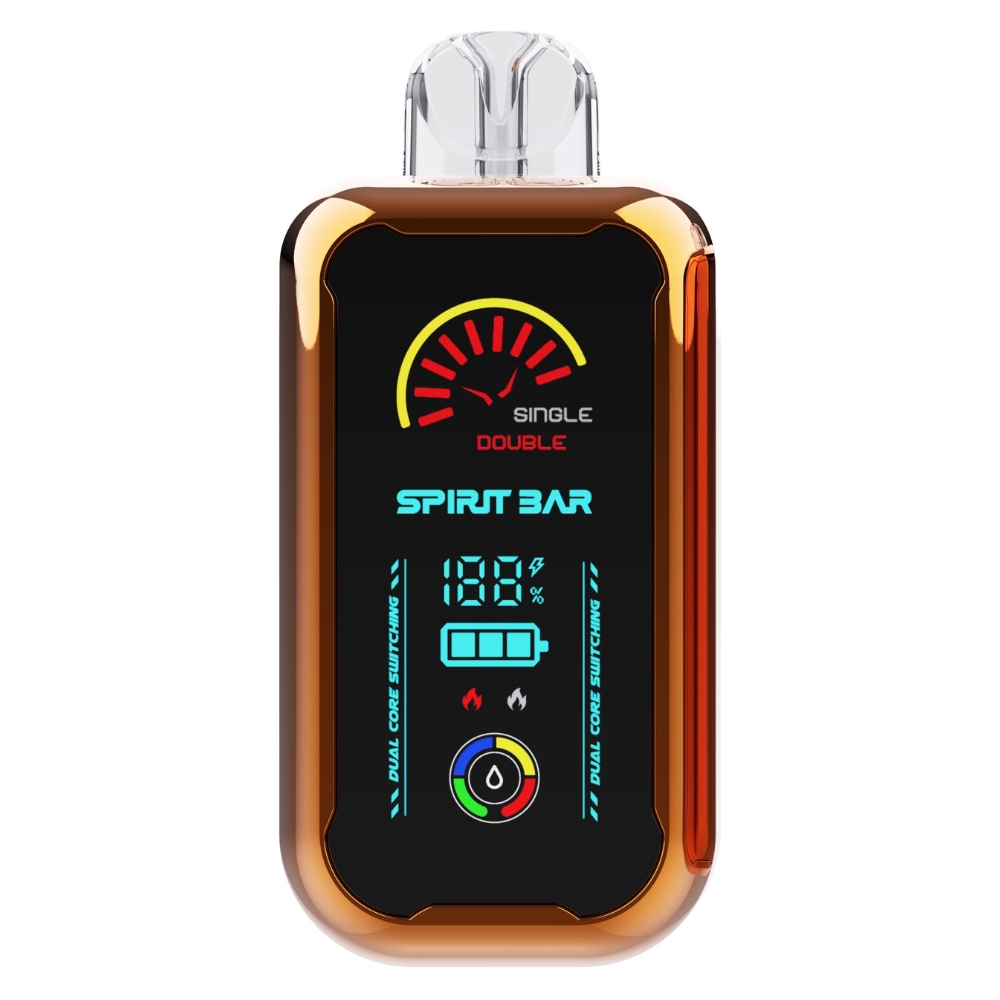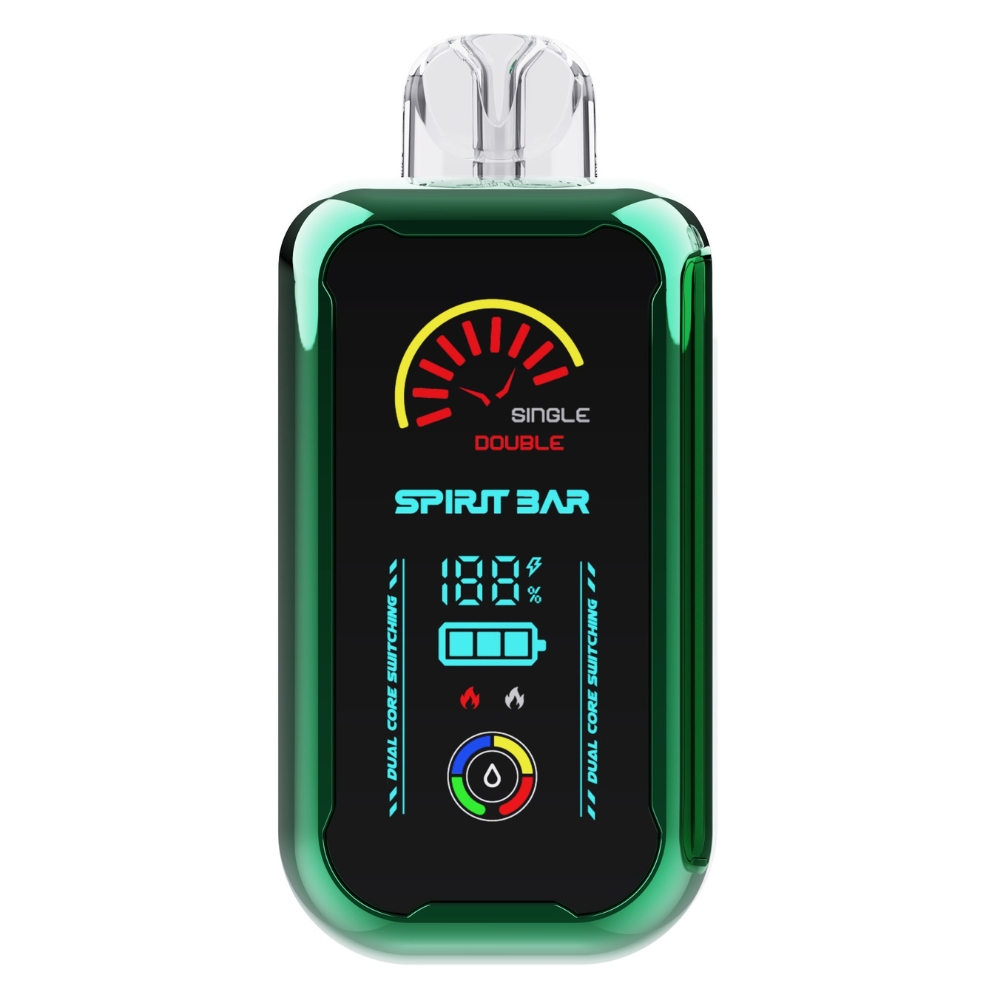How Much Nicotine Do You Inhale from a Vape? Understanding the Amount of Nicotine Delivered by E-Cigarettes
If you are new to vaping, you may be wondering how much nicotine you inhale from a vape. The amount of nicotine you inhale can depend on several factors such as the type of device you are using, the strength of the e-liquid, and how often you vape.
One thing to keep in mind is that not all vapes contain nicotine. Some e-liquids are nicotine-free, while others contain varying levels of nicotine. If you are trying to quit smoking, you may want to start with a higher nicotine level and gradually decrease it over time.
It’s also important to note that the amount of nicotine you inhale from a vape can be different than the amount you inhale from a cigarette. While the average cigarette contains around 12 milligrams of nicotine, the amount of nicotine in an e-liquid can vary. Understanding how much nicotine you are inhaling from your vape can help you make informed decisions about your vaping habits and potentially reduce your nicotine intake.
Understanding Vaping and E-Cigarettes
If you’re curious about vaping and e-cigarettes, you may be wondering how much nicotine you inhale from a vape. E-cigarettes work by heating a liquid that usually contains nicotine, flavorings, and other chemicals to create an aerosol that you inhale. While vaping is often marketed as a safer alternative to smoking traditional cigarettes, it’s important to understand that it’s not completely risk-free.
Nicotine Levels in E-Cigarettes
The amount of nicotine you inhale from a vape can vary depending on the type of e-cigarette you use and the strength of the e-liquid. Some e-cigarettes have cartridges or pods that come pre-filled with e-liquid, while others allow you to refill the tank with your own e-liquid. The nicotine concentration of e-liquid is usually measured in milligrams per milliliter (mg/mL).
According to the American Lung Association, a typical pod or cartridge for a Juul e-cigarette contains about the same amount of nicotine as a pack of cigarettes. Some other brands of e-cigarettes may contain even higher levels of nicotine. It’s important to note that the amount of nicotine you inhale from a vape can be affected by how often and how deeply you inhale.
Risks of Nicotine Inhalation
Nicotine is a highly addictive substance that can have negative effects on your health. It can raise your blood pressure and heart rate, narrow your arteries, and increase your risk of heart disease. Nicotine can also affect your brain by increasing the release of dopamine, which can lead to addiction.
In addition to the risks associated with nicotine, e-cigarettes can also expose you to other harmful chemicals. The aerosol produced by e-cigarettes can contain potentially harmful substances like formaldehyde, acrolein, and acetaldehyde. Some e-cigarettes have also been found to contain heavy metals like lead and cadmium.
Conclusion
While vaping may be marketed as a safer alternative to smoking traditional cigarettes, it’s important to understand the risks associated with nicotine inhalation and exposure to other harmful chemicals. If you’re considering using e-cigarettes as a way to quit smoking, it’s important to talk to your doctor about your options.
Nicotine Content in Vape Juice
When it comes to vaping, the most important factor to consider is the nicotine content in the vape juice. Nicotine is the addictive substance found in tobacco, and it is also present in most vape juices. The amount of nicotine in vape juice can vary greatly, so it’s essential to know how much nicotine you are inhaling.
Nicotine content in vape juice is measured in milligrams per milliliter (mg/mL). The nicotine strength of vape juice can range from 0mg/mL to 50mg/mL, with most vape juices containing nicotine levels between 3mg/mL and 18mg/mL. The higher the nicotine content, the stronger the throat hit and the more addictive the vape juice can be.
It’s important to note that the nicotine content in vape juice can vary depending on the type of device you are using. For example, pod systems typically have higher nicotine content, while sub-ohm tanks have lower nicotine content. It’s also important to consider your own nicotine tolerance when choosing a vape juice with the appropriate nicotine content.
To help you understand the nicotine content in vape juice, here is a breakdown of the most common nicotine strengths:
-
0mg/mL: This vape juice contains no nicotine and is suitable for those who want to enjoy the flavor of vaping without the addictive substance.
-
3mg/mL: This is a low nicotine strength and is suitable for those who are trying to quit smoking or who have a low nicotine tolerance.
-
6mg/mL: This is a medium nicotine strength and is suitable for moderate smokers who are trying to quit smoking.
-
12mg/mL: This is a high nicotine strength and is suitable for heavy smokers who are trying to quit smoking.
-
18mg/mL: This is an extra high nicotine strength and is suitable for those who have a very high nicotine tolerance.
It’s important to keep in mind that the nicotine content in vape juice can be addictive and can have harmful effects on your health. It’s essential to use vape juice with appropriate nicotine content and to avoid using vape juice altogether if you are not a smoker or are under the legal smoking age.
Inhalation Process and Nicotine Absorption
When using a vape, the inhalation process plays a crucial role in determining the amount of nicotine absorbed by your body. There are different techniques that vapers use to inhale vapor, and each technique affects the amount of nicotine absorbed.
Inhaling Techniques
The two main techniques for inhaling vapor are mouth-to-lung (MTL) and direct-to-lung (DTL). In MTL, you first draw the vapor into your mouth, then inhale it into your lungs. This technique is similar to smoking a cigarette and is commonly used by beginners. With DTL, you inhale the vapor directly into your lungs without holding it in your mouth first. This technique is used by experienced vapers who want to produce more vapor and experience a stronger hit.
The technique you use affects the amount of nicotine absorbed. With MTL, the vapor stays in your mouth longer, allowing more nicotine to be absorbed through the oral mucosa. With DTL, the vapor goes straight to your lungs, which can result in less nicotine absorption through the oral mucosa but more through the lungs.
Nicotine Absorption Rate
The rate at which nicotine is absorbed also depends on several factors, including the type of device used, the nicotine concentration in the e-liquid, and the frequency and duration of inhalation.
Studies have shown that nicotine absorption from vaping can vary widely depending on these factors. For example, a study published in the Journal of Analytical Toxicology found that the nicotine absorption rate ranged from 20% to 93% depending on the device used and the vaping conditions.
It’s important to note that the nicotine absorption rate from vaping is generally lower than that from smoking cigarettes. According to the Centers for Disease Control and Prevention (CDC), the average cigarette contains about 10 to 12 mg of nicotine, while the amount of nicotine in e-liquids varies widely, with some containing as little as 3 mg and others containing as much as 50 mg.
In summary, the amount of nicotine absorbed from vaping depends on several factors, including the inhalation technique, the type of device used, the nicotine concentration, and the frequency and duration of inhalation. It’s important to use vaping products responsibly and understand the potential health risks associated with nicotine use.
Comparative Analysis: Vaping vs Traditional Smoking
When it comes to nicotine intake, vaping and traditional smoking have significant differences. Here is a comparison between the two:
Nicotine Levels
The amount of nicotine in a cigarette varies depending on the brand, but on average, a smoker absorbs between 1mg and 2mg of nicotine from each cigarette. On the other hand, the amount of nicotine in a vape can also vary depending on the e-liquid used, but a typical 20mg/ml vape contains 2ml of e-liquid and 40mg of total nicotine. A vaper absorbs about 20mg of nicotine from vaping the entire 2ml of nicotine in a typical vape.
Absorption Rate
The way nicotine is absorbed in the body is also different between vaping and traditional smoking. When you smoke a cigarette, nicotine is absorbed quickly into the lungs, then through the bloodstream, and finally into the brain. In contrast, when you vape, nicotine is absorbed through the mucous membranes in your mouth and throat and then enters the bloodstream.
Conversion Rate
Another difference between vaping and traditional smoking is the conversion rate of nicotine. A smoker absorbs between 1mg and 2mg of nicotine from each cigarette, while a vaper absorbs 50% of the nicotine contained in a vape. This means that if you vape the same amount of nicotine as you would get from smoking a cigarette, you would absorb only half the amount of nicotine.
Health Risks
While both smoking and vaping have side effects and risks, vaping is generally considered to be less harmful than traditional smoking. According to the Cleveland Clinic, vaping exposes you to fewer toxic chemicals than smoking, and it may help you quit smoking altogether. However, vaping is not entirely risk-free, and it can still cause health problems such as lung damage and addiction to nicotine.
In summary, when it comes to nicotine intake, vaping and traditional smoking have significant differences. While vaping may expose you to fewer toxic chemicals than smoking, it is still not entirely risk-free. It is important to be aware of the differences between the two and make an informed decision based on your personal health and preferences.
Health Implications of Nicotine from Vaping
Nicotine is a highly addictive substance found in e-cigarettes. It is also the main reason why people use them. Vaping delivers nicotine to your lungs and bloodstream, producing a short-term high that is similar to smoking traditional cigarettes. However, the long-term effects of vaping are still unknown.
Short-Term Effects
Nicotine is a stimulant that can cause an increase in heart rate, blood pressure, and breathing rate. It can also cause dizziness, nausea, and headaches. The amount of nicotine you inhale from vaping depends on the strength of the e-liquid and the frequency and duration of your vaping sessions.
According to Johns Hopkins Medicine, the amount of nicotine in a single pod of e-liquid is equivalent to that of a pack of cigarettes. However, the actual amount of nicotine you inhale from vaping depends on several factors, such as your vaping habits and the type of device you use.
Long-Term Effects
The long-term effects of vaping are still unknown, but studies have shown that nicotine can have harmful effects on your health. Nicotine is highly addictive, and it can lead to dependence and withdrawal symptoms when you try to quit. It can also have negative effects on brain development, especially in young adults.
The Centers for Disease Control and Prevention (CDC) states that nicotine can harm adolescent and young adult brain development, which continues into the early to mid-20s. Nicotine can also affect concentration and brain development, according to information and data from a new report from the surgeon general. Additionally, nicotine use in young adults can lead to other illicit substance use.
In conclusion, vaping delivers nicotine to your lungs and bloodstream, producing a short-term high that is similar to smoking traditional cigarettes. However, the long-term effects of vaping are still unknown. Nicotine is highly addictive and can have negative effects on your health, especially on brain development in young adults. It is important to be aware of the potential health implications of nicotine from vaping and to make informed decisions about your vaping habits.
Regulations and Guidelines on Nicotine in Vape Products
When it comes to nicotine in vape products, there are regulations and guidelines that manufacturers and retailers must follow. These regulations vary depending on the country and state, so it’s important to know the rules in your area.
United States
In the United States, the Food and Drug Administration (FDA) regulates the manufacturing, marketing, and distribution of tobacco products, including e-cigarettes and vape products. In 2020, the FDA issued regulations that require all e-cigarette manufacturers to register with the agency and submit a list of their products, including the ingredients and nicotine levels.
The FDA also regulates the sale of e-cigarettes and vape products to minors. In 2019, the agency raised the minimum age for buying and possessing vaping products to 21. Additionally, the Preventing All Cigarette Trafficking (PACT) Act was amended in 2021 to include new regulations regarding the delivery and sales of electronic nicotine delivery systems (ENDS), which include e-cigarettes, vapes, flavored and smokeless tobacco.
United Kingdom
In the United Kingdom, the Medicines and Healthcare products Regulatory Agency (MHRA) regulates the safety and quality of e-cigarettes and vape products. The agency requires manufacturers to submit their products for testing and approval before they can be sold in the UK.
The MHRA also regulates the nicotine content in e-cigarettes and vape products. The maximum nicotine strength allowed in the UK is 20mg/ml. Additionally, all e-cigarette and vape products must be child-resistant and tamper-evident.
European Union
In the European Union, the Tobacco Products Directive (TPD) regulates the manufacturing, marketing, and distribution of e-cigarettes and vape products. The TPD requires all e-cigarette manufacturers to register with the agency and submit a list of their products, including the ingredients and nicotine levels.
The TPD also regulates the nicotine content in e-cigarettes and vape products. The maximum nicotine strength allowed in the EU is 20mg/ml. Additionally, all e-cigarette and vape products must be child-resistant and tamper-evident.
Overall, it’s important to follow the regulations and guidelines on nicotine in vape products to ensure safety and quality. Always check the nicotine strength and ingredients before using any e-cigarette or vape product.
Alternatives and Solutions to Nicotine Vaping
If you are looking for alternatives to nicotine vaping, there are several options available. Here are a few suggestions:
1. Nicotine-Free Vaping
If you enjoy the act of vaping but want to avoid nicotine, you can try using e-juice that doesn’t contain nicotine. Many e-juice flavors come in nicotine-free options, and you can still enjoy the taste and sensation of vaping without the addictive substance.
2. Herbal Vaping
Herbal vaping involves using dried herbs in a vaporizer instead of e-juice. This method allows you to inhale the natural flavors and aromas of herbs without any nicotine or other harmful substances. Some popular herbs for vaping include chamomile, lavender, and peppermint.
3. Nicotine Replacement Therapy (NRT)
Nicotine replacement therapy (NRT) products like patches, gums, and lozenges can help you quit smoking and vaping. These products provide a low dose of nicotine to help reduce cravings and withdrawal symptoms. NRT products are available over the counter at most drugstores.
4. Behavioral Therapy
Behavioral therapy can help you quit nicotine vaping by addressing the underlying psychological factors that contribute to addiction. This type of therapy can help you identify triggers and develop coping mechanisms to manage cravings and stress.
5. Cold Turkey
Going cold turkey means quitting nicotine vaping without any assistance or support. While this method can be challenging, it is also the most straightforward and cost-effective way to quit. Some people find that going cold turkey is the most effective way to break their addiction to nicotine.
Remember, quitting nicotine vaping is a personal journey, and what works for one person may not work for another. It’s essential to find the method that works best for you and stick with it.
Frequently Asked Questions
What is the typical amount of nicotine in a vape pod?
The amount of nicotine in a vape pod can vary depending on the brand and flavor. However, most vape pods contain between 1.2% and 5% nicotine by volume. Some brands may offer higher or lower nicotine levels, so it’s important to check the label before purchasing.
How does the amount of nicotine in a vape compare to a cigarette?
The amount of nicotine in a vape can vary widely depending on the brand and flavor, but in general, a single vape pod can contain as much nicotine as a pack of cigarettes. However, because vapes are typically used differently than cigarettes, it can be difficult to compare the two directly.
Is 2% nicotine considered high in a vape?
A 2% nicotine concentration is generally considered to be a moderate to high level of nicotine in a vape pod. However, some brands may offer higher or lower concentrations, so it’s important to check the label before purchasing.
How many puffs of a 20mg vape equal one cigarette?
There is no exact equivalent between puffs of a 20mg vape and cigarettes, as the way nicotine is absorbed by the body differs between the two. However, some estimates suggest that it may take around 10-20 puffs of a 20mg vape to equal the nicotine in one cigarette.
Do you inhale all the nicotine when vaping?
When you inhale from a vape, you absorb some of the nicotine into your bloodstream through your lungs. However, not all of the nicotine is absorbed, and some may be lost in the vapor or absorbed through your mouth. The exact amount of nicotine absorbed can vary depending on factors such as the type of vape, the concentration of nicotine, and how deeply you inhale.
What is the nicotine content of an Elf Bar?
Elf Bars are disposable vapes that come pre-filled with e-liquid. The nicotine content can vary depending on the flavor and concentration, but most Elf Bars contain between 2% and 5% nicotine by volume. As with any vape product, it’s important to check the label for specific information about the nicotine content.


